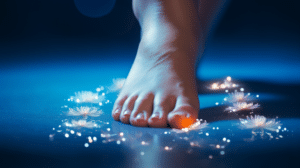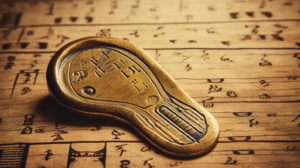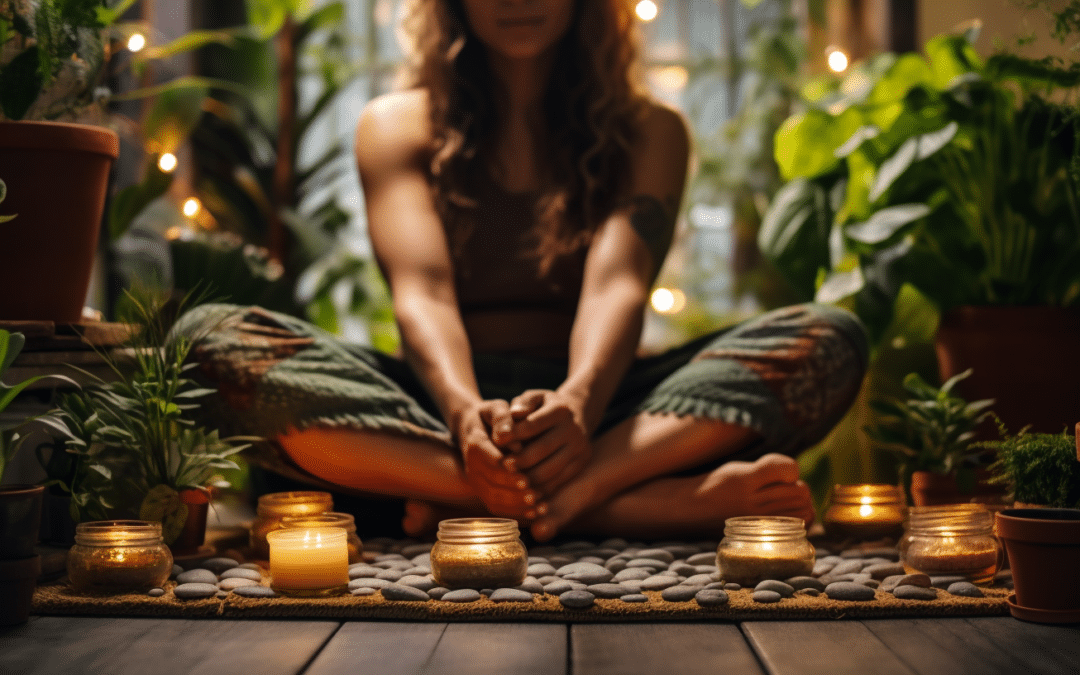Stress can affect our physical, emotional, and mental well-being. Reflexology is a holistic healing technique that has been used for centuries to reduce stress, promote relaxation, and restore balance in the body. This ancient practice involves applying pressure to specific points of the feet and hands that are believed to correspond with different organs and systems of the body. In this article, we will explore how reflexology works, its benefits, techniques used by practitioners, common questions about this therapy, and how to find a qualified reflexologist.
Key Takeaways
- Reflexology is an ancient healing modality used for thousands of years to relieve stress and promote relaxation.
- Reflexology involves applying pressure to specific regions on the feet linked to other body parts, stimulating pressure points to relax the mind and body.
- Reflexology sessions can help relieve stress by promoting overall well-being and boosting the body’s natural healing process.
- Finding a qualified reflexology practitioner who has undergone rigorous training and certification is essential for experiencing the full benefits of reflexology.
What Is Reflexology?
 Reflexology is a holistic healing practice based on applying pressure to certain points in the body to affect specific organs and systems. It has been used for centuries to help reduce tension, improve circulation, and promote relaxation. Reflexology works by stimulating nerve endings in the feet, hands, and ears. These nerve endings are connected to different body parts, such as the heart, lungs, digestive system, and other organs, which can be impacted by stress or tension.
Reflexology is a holistic healing practice based on applying pressure to certain points in the body to affect specific organs and systems. It has been used for centuries to help reduce tension, improve circulation, and promote relaxation. Reflexology works by stimulating nerve endings in the feet, hands, and ears. These nerve endings are connected to different body parts, such as the heart, lungs, digestive system, and other organs, which can be impacted by stress or tension.
The practitioner applies gentle pressure with their hands or specialized tools designed specifically for reflexology. This helps increase blood flow in these areas while also helping to release endorphins, which act as natural painkillers. Reflexology can relieve stress and tension and improve well-being while promoting relaxation and a sense of belonging.
Benefits of Reflexology
Studies have found that reflexology is associated with various health benefits, including improved relaxation and mood. Reflexology has been used as an alternative therapy to help. Balance the body, reduce stress, and promote physical and emotional well-being. The practice involves applying pressure to certain areas of the feet or hands that correspond with organs in the body.
Balance the body, reduce stress, and promote physical and emotional well-being. The practice involves applying pressure to certain areas of the feet or hands that correspond with organs in the body.
Some of the potential benefits of reflexology include:
- Improved circulation – Stimulating reflex points on the foot can improve circulation throughout the body.
- Reduced pain – Reflexology can help reduce pain from headaches, muscle soreness, arthritis, and other aches and pains.
- Stress relief – Regular sessions may reduce overall stress levels by helping to relax the mind and body.
Reflexology is a holistic approach to health care that considers the whole person—mind, body, spirit—to achieve greater well-being and peace in one’s life. With its focus on alternative therapies rather than medications for symptom relief or medical intervention for illness treatment, it can provide an effective way for people to manage their own physical and emotional health without relying solely on traditional medicine.
How Reflexology Works
Reflexology is a holistic approach to medical care that focuses on the feet as an interconnected map of the body. This technique involves applying pressure to specific areas of the feet, known as pressure points, which correspond to different body parts. In reflexology, each foot is divided into reflex zones or areas where each point corresponds to an organ or system in the body. By stimulating these zones with gentle pressure and massage techniques, practitioners can help promote relaxation and reduce stress.
Foot Zones
Research suggests that the feet contain specific zones, which correspond to certain organs and systems in the body, that can be manipulated to promote relaxation. These reflex points are located on the soles of our feet and, when appropriately massaged, can help reduce stress levels:
- By applying pressure to areas of tension:
- Foot massage helps release tightness and knots in muscles.
- Releasing these tension points helps achieve balance for improved well-being.
- Through stimulating reflexology points:
- Reflexology involves applying pressure to various reflex points on the feet.
- This stimulation encourages more profound relaxation and an overall feeling of connectedness.
Pressure Points
Manipulating specific pressure points on the feet through massage and reflexology techniques can help achieve a balanced state. Pressure points are small areas located throughout the body, including the feet, which, when stimulated, may relieve various physical and emotional ailments. Different pressure points exist; some connect to particular organs or systems in the body, while others are related to emotional states such as relaxation or stress.
Reflexology benefits include reducing tension, improving circulation, and promoting overall well-being. Depending on an individual’s needs, a reflexologist may focus on specific pressure points to help restore balance. When combined with other holistic approaches such as yoga and meditation, reflexology can be a powerful tool for helping reduce stress and promote relaxation.
The History of Reflexology
 The origin of reflexology dates back to ancient Egypt, India, and China. Ancient cultures used the traditional practice of reflexology to promote health, well-being, and relaxation. Applying gentle pressure to certain areas of the feet, hands, or ears is believed to help bring balance and harmony to the body’s systems. Reflexology has been used for centuries as a holistic approach to eliminating stress and promoting relaxation.
The origin of reflexology dates back to ancient Egypt, India, and China. Ancient cultures used the traditional practice of reflexology to promote health, well-being, and relaxation. Applying gentle pressure to certain areas of the feet, hands, or ears is believed to help bring balance and harmony to the body’s systems. Reflexology has been used for centuries as a holistic approach to eliminating stress and promoting relaxation.
Reflexology became more popular in Europe during the 19th century when physicians began studying its effects on various illnesses. Modern scientific research has proven reflexology can help reduce stress through improved circulation, immunity, decreased pain, and increased energy levels.
Reflexologists believe that each area of the foot or hand corresponds with different organs in the body. By targeting specific pressure points, they can work gently on these areas to aid healing and improve overall well-being. Stimulating these nerve endings helps break down blockages, restoring natural balance within the body and leading to comfort, balance, and relaxation.
Types of Reflexology Techniques
Various techniques are used in reflexology to stimulate pressure points on the feet, hands, or ears. These reflexology techniques activate the body’s natural healing processes, helping to relieve stress and promote relaxation. Self-reflexology is a technique that uses massage tools such as stones, rubber balls, or spiky balls to apply pressure directly onto specific areas of your hands or feet. This technique can help release tension and blockages throughout the body as it helps relax muscles and improve circulation.
A zone therapy technique also uses a map of each reflex point on your feet or hands divided into ten zones, with five corresponding to your head, chest, abdomen, back, and legs. This method works by applying pressure onto the regions linked to other body parts for healing. The thumb walk technique is another form of reflexology where pressure is applied using circular movements with thumbs along one foot at a time from heel to toe and then towards the center of that foot’s arch before repeating this process on the other foot. Stimulating these pressure points through any method helps relax the mind and body while boosting overall well-being.
Preparing for a Reflexology Session
Reflexology is a holistic healing technique that offers numerous benefits, including relief from stress and relaxation. Before engaging in a reflexology session, it is essential to research practitioners and understand what to expect. Individuals should be certified and qualified to provide reflexology services when seeking a practitioner. Also, it would be helpful to understand the session’s possible outcomes before beginning so expectations can be managed.
Benefits of Reflexology
Benefits of reflexology include a reduction in stress and promotion of relaxation. Reflexology is an alternative therapy that uses specific massage techniques to apply pressure to different areas of the feet, hands, and ears. This ancient healing modality has been used for thousands of years to treat various ailments. Benefits include: – Improved sleep quality – Increased energy levels – Relief from anxiety and depression.
Reflexology encourages the body’s natural healing process by promoting relaxation through various calming techniques. Stimulating specific points on the feet, hands, or ears helps balance the body’s energy flow, thus encouraging physical well-being. Through its holistic approach to health and wellness, reflexology helps provide mental and physical relief from everyday stressors while promoting overall well-being.
Finding a Practitioner
Finding a qualified reflexology practitioner may benefit those seeking its therapeutic benefits. When looking for a qualified practitioner, the individual must undergo rigorous training to receive their certification. Qualifying criteria for practitioners should include knowledge of human anatomy and physiology, understanding pressure point massage techniques, and evidence of hands-on experience.
Additionally, practitioners should have a holistic approach to understanding the body’s relationship with health from physical, emotional, mental, and spiritual perspectives. You should know that practitioner qualifications will vary depending on your country or region, so it is essential to research these credentials before selecting someone who meets your needs. With this in mind, finding an experienced professional can help ensure you receive the most appropriate care for your overall well-being.
Expectations for Session
A reflexology session entails various expectations that can be discussed with the practitioner before treatment. Clients should generally anticipate pressure relief and relaxation benefits during the treatment. The practitioner will likely discuss any particular areas causing discomfort or pain and expectations for the overall session. It is essential to convey all concerns before beginning to ensure a holistic approach when providing reflexology.
Clients may also ask how often they should return to maximize potential relaxation benefits and stress relief. Additionally, practitioners can suggest post-treatment activities such as hydration and meditation to reduce stress. Ultimately, clients should feel empowered in their journey towards health and wellness through reflexology while feeling a sense of belonging within the community of people who seek its benefits.
What to Expect During a Reflexology Session
Reflexology sessions typically involve a practitioner applying pressure to specific points on the feet, hands, or ears to stimulate relaxation and address physical ailments. During the session, the client is asked about their health status and medical history. The reflexologist will then use various techniques, such as thumb walking and finger pressing, to apply pressure to specific body areas. These techniques reduce tension in multiple muscles, tendons, and ligaments.
The duration of each session depends on the individual’s needs but can range from 15 minutes to hours. Costs for these sessions can vary depending on location and experience level of the practitioner but typically range between $50-$150 per hour. Reflexology helps promote relaxation by stimulating endorphins, hormones that act as natural painkillers, allowing you to feel more relaxed overall. It also increases circulation throughout your body, which helps deliver oxygen and nutrients more efficiently, helping reduce stress levels. Reflexology aims to reduce stress and provide holistic solutions for better mental health and well-being.
How Reflexology Can Help Relieve Stress
Studies suggest that various techniques used in reflexology can effectively assist with stress relief. Reflexology is a holistic healing therapy that applies pressure to specific areas on the feet and hands to promote better physical, mental, emotional, and spiritual well-being. This technique has been shown to reduce anxiety, enhance sleep quality, improve moods, and create relaxation.
Reflexology promotes relaxation by using a range of massage techniques that focus on particular parts of the body. The therapist applies gentle pressure to specific points on the feet and hands, which correspond with other organs and systems within the body. Stimulating these points helps relieve muscle tension throughout the body, improving circulation and increasing energy levels.
The feeling of being relaxed is also achieved through calming music or aromatherapy during a session and an overall calming atmosphere in which one can feel safe and comfortable. Practitioners also use positive affirmations during each session that help put clients into a state of calmness while giving them words of encouragement for their journey ahead toward recovery from stress or any other physical or mental illness they are dealing with at the time.
Overall, reflexology provides an excellent way for individuals suffering from stress or any other physical or mental ailment to recover from their symptoms without taking medications or undergoing medical treatments such as surgery. It is also very beneficial when it comes to reducing anxiety levels so that people can enjoy better quality sleep while allowing them to regain physical and emotional balance to lead healthier lives.
How Reflexology Can Help Promote Relaxation
By employing a range of massage techniques that focus on particular parts of the body, reflexology can assist individuals in achieving relaxation. Reflexology practitioners believe stimulating specific body areas can improve energy flow and help restore balance and health. Through this, individuals can benefit from increased feelings of relaxation and well-being.
- Self-care through reflexology
- Improved circulation
- Relaxation of muscles
- Increased mental clarity
- Improved sleep quality
Reflexology is becoming increasingly popular as an effective stress relief and relaxation self-care tool. It encourages people to take time and be mindful of their needs. Not only does it have physical benefits such as improved circulation, but it also helps to relax the mind, which has a direct impact on reducing stress levels. By stimulating specific pressure points, practitioners can access blocked energy pathways that may contribute to feelings of tension or stress in the body. This promotes a sense of well-being, and individuals can experience more significant states of relaxation and peace by calming the mind.
Common Questions About Reflexology
Reflexology is an alternative medicine practice that uses pressure points on the feet and hands to improve overall health. It is based on the idea that each part of the body corresponds to specific areas in the hands and feet, with pressure used to affect healing. The benefits of reflexology include improved relaxation, circulation, and relief from stress and anxiety. Applying reflexology involves a therapist applying finger or thumb pressure to specific areas of the hand or foot for a prescribed amount of time. This can be done in combination with massage techniques for additional relaxation benefits.
What Is Reflexology?
Reflexology is an ancient practice of pressure point massage on specific areas of the body, which are believed to correspond with particular organs and bodily systems. It is a form of energy healing that involves applying massage techniques to the feet to promote relaxation, stress relief, and overall well-being. It is based on the idea that different points on the feet are connected to various parts of the body by invisible energy pathways.
Massaging these reflex points on your feet can help restore balance in your entire body and create a sense of belonging within yourself. Reflexology can be used as part of a regular self-care routine or to address specific ailments or concerns. Through foot massage, it works to relieve tension and promote relaxation while also helping to boost circulation throughout your whole body.
Benefits of Reflexology
Applying massage techniques to specific points on the feet offers a range of beneficial effects. Reflexology is a holistic approach used for centuries to promote emotional healing and physical balance. It can relieve stress, tension, fatigue, headaches, insomnia, and other ailments related to an unbalanced lifestyle.
Reflexology offers many benefits: – Improved circulation throughout the body – Reduced pain in affected areas – Increased energy levels – Balanced hormones and endocrine system – Enhanced relaxation and well-being.
Applying Reflexology
Applying pressure to specific reflex points on the feet, hands, and ears can assist in restoring balance to the body. Reflexology techniques involve applying gentle but firm pressure to these points using thumb or finger strokes. This helps promote energy flow throughout the body and encourages relaxation. Pressure is applied in different directions depending on the stimulated area for maximum benefit.
By focusing on specific areas of tension and stress, reflexology can address physical issues related to chronic pain, insomnia, anxiety, depression, digestive disorders, and more. It is important to note that this practice does not replace traditional medical treatments but is a complementary therapy for overall wellness. By establishing a regular reflexology routine, individuals can experience improved well-being through enhanced relaxation and reduced stress levels.
Finding a Reflexology Practitioner
Identifying a qualified reflexology practitioner can benefit those seeking relief from stress and relaxation. Knowing what certification requirements and qualifications to look for in a practitioner is essential in finding the right one. Knowing these details ensures that the individual has been trained with the necessary techniques to help relieve stress and promote relaxation through reflexology. It is also essential to research how long the practitioner has been practicing and whether they are certified by professional organizations or associations.
It is also essential to find a practitioner who will consider all aspects of a person’s lifestyle when providing treatment. A holistic approach should be taken to ensure that all areas are addressed when relieving stress and promoting relaxation. The practitioner should strive for a balance between physical, emotional, mental, and spiritual well-being within their practice while considering factors such as diet, exercise, environment, relationships, work-life balance, and more.
Frequently Asked Questions
How Long Does a Reflexology Session Typically Last?
A reflexology session typically lasts between 45 minutes and an hour. During this time, the practitioner employs techniques such as massaging the hands, feet, or other body parts to stimulate different points associated with various organs. The purpose of these alternative methods is to encourage spiritual healing and relaxation by restoring energy flow throughout the body. Reflexology can benefit those seeking relief from stress, anxiety, fatigue, aches and pains. It helps create harmony within oneself by allowing one to reconnect with one’s inner self and find solace in belonging.
Are There Any Risks Associated With Reflexology?
When considering reflexology, awareness of any associated risks is essential. Practitioners should hold a qualification in reflexology that allows them to accurately assess this treatment’s suitability for an individual. Reflexology itself has no long-term effects; however, if the practitioner is inexperienced or unqualified, they may cause injury or harm, which can have lasting consequences. It is always best to research the qualifications and experience of the practitioner before getting a reflexology session. When done correctly and safely, reflexology can provide relaxation and reduce stress levels with no adverse side effects.
How Much Does a Reflexology Session Cost?
The cost of a reflexology session varies depending on the practitioner and area but typically falls within the range of $50-$100 per hour. It is important to note that affordable options are often available, and some practitioners offer discounts for those with limited incomes. The health benefits of reflexology make it well worth the cost, as it can help alleviate stress and promote relaxation. Furthermore, because it is a holistic approach to well-being, it promotes not only physical health but mental health as well. Therefore, investing in a reflexology session is an investment in yourself that can bring tremendous financial and emotional benefits.
Do Traditional Medical Organizations Recognize Reflexology?
Reflexology, the ancient practice of applying pressure to specific points on the feet and hands, has become increasingly popular in recent years. Like a soothing balm for the mind-body connection, it can relieve stress and promote relaxation. While traditional medical organizations do not officially recognize reflexology, its efficacy is supported by research suggesting that it is more than a mere placebo effect. Many people turn to reflexology as part of their holistic approach to health care. As an empathetic practice that invites feelings of belonging and well-being, reflexology has the potential to be a powerful tool for reducing stress and promoting relaxation.
Are There Any Contraindications for Reflexology?
Reflexology is a holistic approach to health care and should be used cautiously. People with specific acute injuries or chronic conditions may have contraindications for reflexology, such as those suffering from deep vein thrombosis, certain neurological disorders, or any infection. Talking about potential risks with a qualified practitioner is essential to ensure this therapy is appropriate before engaging in reflexology. As part of the holistic approach, practitioners must also assess their clients’ physical and emotional condition before commencing treatment.
Conclusion
Reflexology is a holistic healing technique used for centuries to bring balance and peace to the body. It can effectively reduce stress and promote relaxation by applying pressure to various points on the feet, hands, or ears. With its many benefits, reflexology is one way of taking control over your health and well-being. As the adage goes, ‘wellness starts from the feet up’ – why not give it a try? With the right practitioner, you can reduce stress levels and promote relaxation without relying on medications or treatments with unwanted side effects.

